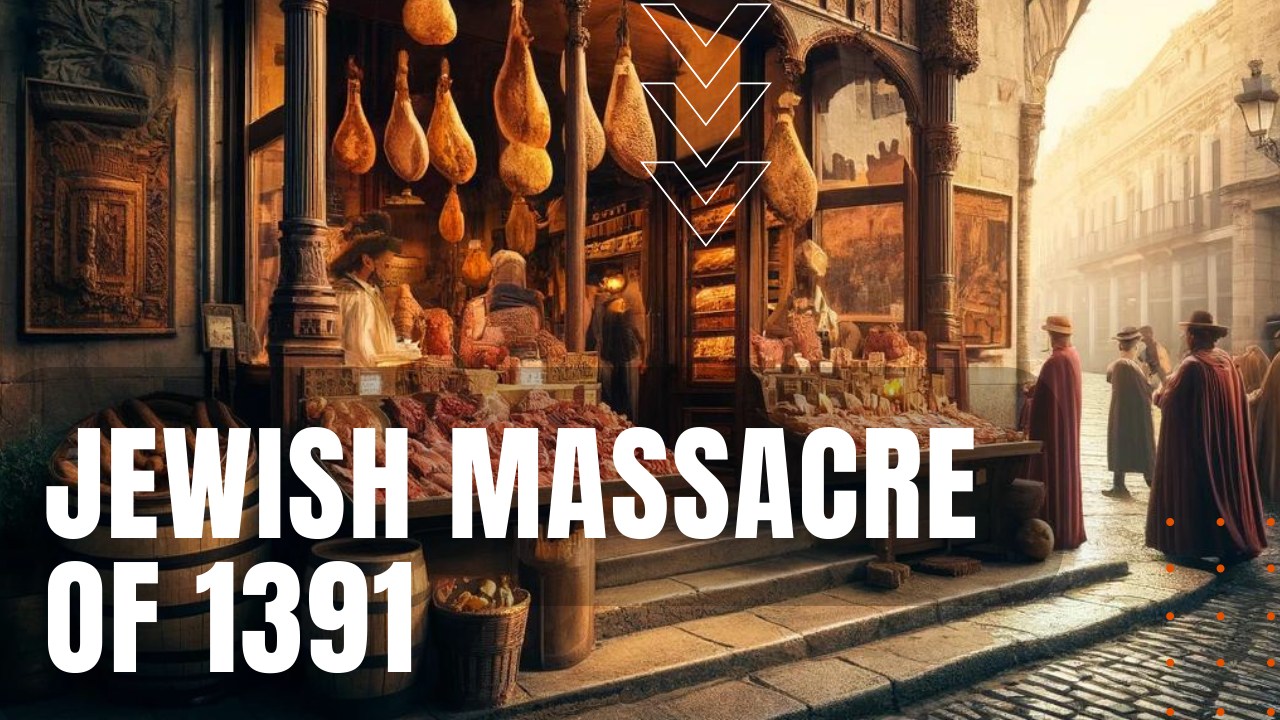Jewish Massacre of 1391

Following the Black Death of 1347 and 1348—an event which took the lives of roughly half of Europe’s population—a series of violent mass attacks against Jews erupted throughout the continent, after fabricated stories arose about a group of rabbis bent on killing Christians by poisoning city wells with plague. From 1348 to 1351, acts of violence broke out in Toulon, Barcelona and cities in Aragon and Castile, Basel Switzerland, Frankfurt, Strasbourg and Speyer Germany—the later residents, stuffing murdered Jews into wine barrels and floating them down the Rhine.
Widespread Destruction
The seemingly unending violence forced many Jews to convert to Christianity or face certain death, leading to the destruction of 510 Jewish communities and sparking a mass migration of Jews into Poland and present-day Lithuania. Antisemitic persecution continued for decades to come in the Castile and Aragon kingdoms of Spain, thanks to the dogged hatred of the Archdeacon of Ecija, Ferrand Martinez. A well-respected and prominent member of the Catholic church, Martinez gave sermons that harshly criticized Jews, which in turn spread his own brand of antisemitic hate to Spanish parishioners.
Temporary Reprieve
Fearing for their lives, the Jews of Seville petitioned King Henry II of Castile for protection, and due to the Jew’s importance to his finances, he ordered Martinez to cease persecution of the Jews in 1378. Ignoring the king’s order, Martinez continued to preach antisemitic sermons, receiving three more warnings from the crown before Archbishop Barroso suspended him in 1389. Jewish relief was short-lived, however, when both the king and the Archbishop died in 1390, allowing Martinez to land a higher position in the church. Violence finally boiled over on June the 6th, 1391, when 4,000 Jews were summarily murdered in Seville, spreading the violence into 70 other cities in Castile and Aragon over the next three months to come.
Mass Exodus
While authorities attempted to protect the Jews, the citizens of Castile and Aragon were swept up in their own overruling hatred, calling for Jews to convert to Christianity or face the instant threat of death. While many Jews fled the country, Philadelphia publisher and historian Henry Charles Lea estimated that 100,000 Jews converted to Christianity following the massacre of 1391, prompting Jewish restaurant owners to hang cured hams on the walls of their eateries as a testament to their conversion, making the massacre of 1391, yet another example of man’s irrational ability to hate.
